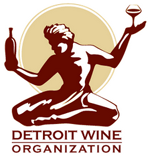No other winemaking country in the world has such a wide range of cool climates, and this has enabled France to produce the entire spectrum of classic wine styles. They range from the crisp sparkling wines of Champagne to the smooth reds of Burgundy to the rich sweet wines of Sauternes. The French would say they have excellent terroir (pronounced terr wahr) which encompasses all aspects of the environment including climate and soil.
The French are very concerned about the quality of their wines. They created a system for regulating the quality, and ranking their wines. The rankings appear on the labels.
- Appellation d’Origine Controlle (AOC or AC) is the most widely applied standard used on French wine labels. It indicates that the wine meets the rigorous legal standards for the area indicated. The more specific the area of origin, the higher the standards.
- Vin Delimite de Qualite Superieure (VDQS) is a second set of standards not covered by AOC law. Although a notch down in quality, VDQS is still a reliable government guarantee of quality.
- Vins de Pays is a third more relaxed set of rules that regulate “country wines”. The phrase is followed by a place name-be it larger(region) or smaller (community).
- Vin de Table or Vin Orinaire are “table wines” whose place names are simply “France”. This is the lowest category of wine in the French system.
Within France, Each region has its own system of organization and classification. Each region is known for producing specific wines.
Bordeaux is possibly the most famous region. Several different wines are produced there:
· Medium bodied red wines are what most people think about Bordeaux. They are blends of Cabernet Sauvignon, Merlot, Cabernet Franc, Malbec and Petit Verdot. They may contain as much as 100% of one grape or as little as 1 or 2%.
· Dry white wines are blends of Sauvignon Blanc and Semillion.
· Sweet dessert wines are also blends of Sauvignon Blanc, and Semillion.
Burgundy is a long narrow wine region in eastern France, southeast of Paris. Because of its unique terroir (the special growing conditions in the vineyards), the Burgundy region excels in both white and red wines. The two great Burgundy grapes are Pinot Noir for the red wines and Chardonnay for the white wines. Although Beaujolais is technically part of Burgundy it is really a separate type of wine made from the Gamay grape.
Rhone Valley is south of Burgundy and it is home to some earthy, gutsy wines, both red, rose and white. The valley can be broken into the Northern Rhone and the Southern Rhone. The Syrah grape is the single red grape that grows in the north, while several white grapes grow there. They include Viognier, Roussanne, and Marsanne. But 95% of all Rhone Valley wine comes from the South. Although the main red grape variety grown here is Grenache, other important red varieties include Syrah, Mourvedre, and Cinsault. Other red grape varieties are grown there but these are the most used in production. The majority of white grape varieties in the South include Grenache Blanc and Clairette.
Loire Valley stretches across northwest France, following the Loire River. The area has a reputation for its non-Chardonnay white wines. The most important one are:
- Muscadet is a light, dry wine that is named after the grape variety (unlike most French wines).
- Vouvray is made from the Chenin Blanc grape. It can range from bone dry to off-dry sparkling.
- Pouilly-Fume is straight Sauvignon Blanc made in a rich style.
- Sancerre is unblended Sauvignon Blanc in a lighter, drier, more lively style than the Pouilly-Fume.
Alsace sits across the Rhine River from Germany. Contrary to the rest of France, Alsace labels its wines with varietal name. The most important varietals are:
· Riesling-much drier than German Riesling
· Gewurtztraminer
· Pinot Gris
· Muscal
· Sylvaner
Champagne region is practically the northernmost latitude limit that grape vines can be cultivated in the northern hemisphere. Because of the cool climate the grapes just barely ripen and remain quite acidic. This is a real problem of non sparkling wines but the reason for being of sparkling wines. The soil is quite chalky from the sea receding 65 million years ago and leaving behind large deposits of crushed sea shells. This type of soil is poor for many crops, but ideal for wine grapes, which thrive in poor soil. As a result of the soil and climate of Champagne, the grapes tend to be tiny, but concentrated in nutrients. Champagne is made primarily from 3 grapes:
· Pinot Noir
· Pinot Meunier
· Chardonnay
True Champagne can only come from the Champagne region and must be produced by the “Methode Champagne”. This means it goes thru a second fermentation process. The wine is bottled with yeast and a little sugar solution. The bottle traps the carbon dioxide so it takes the form of tiny bubbles in the wine.
Now there are other French wine regions but these are the most popular.
Jevon is a board member


Leave A Comment